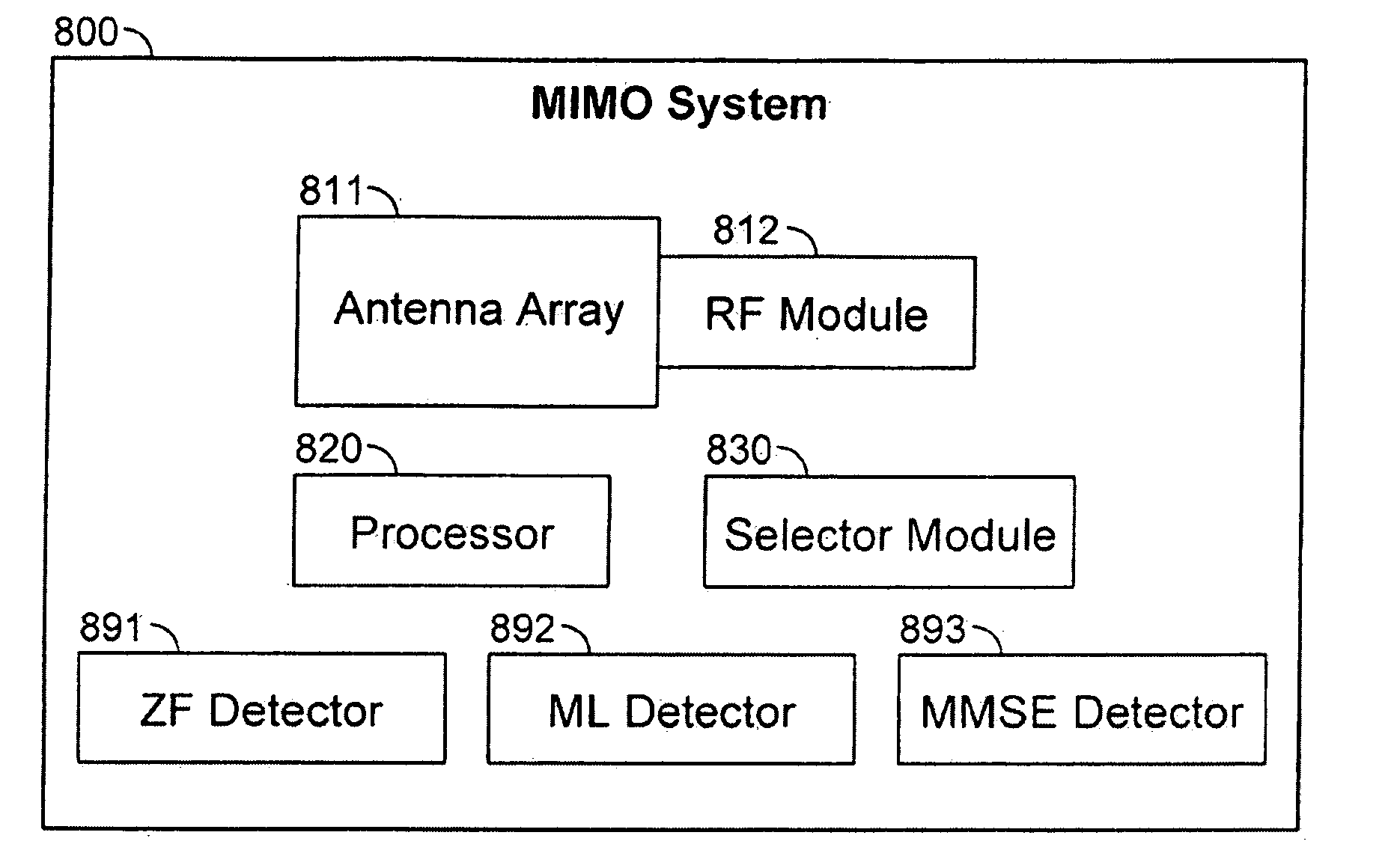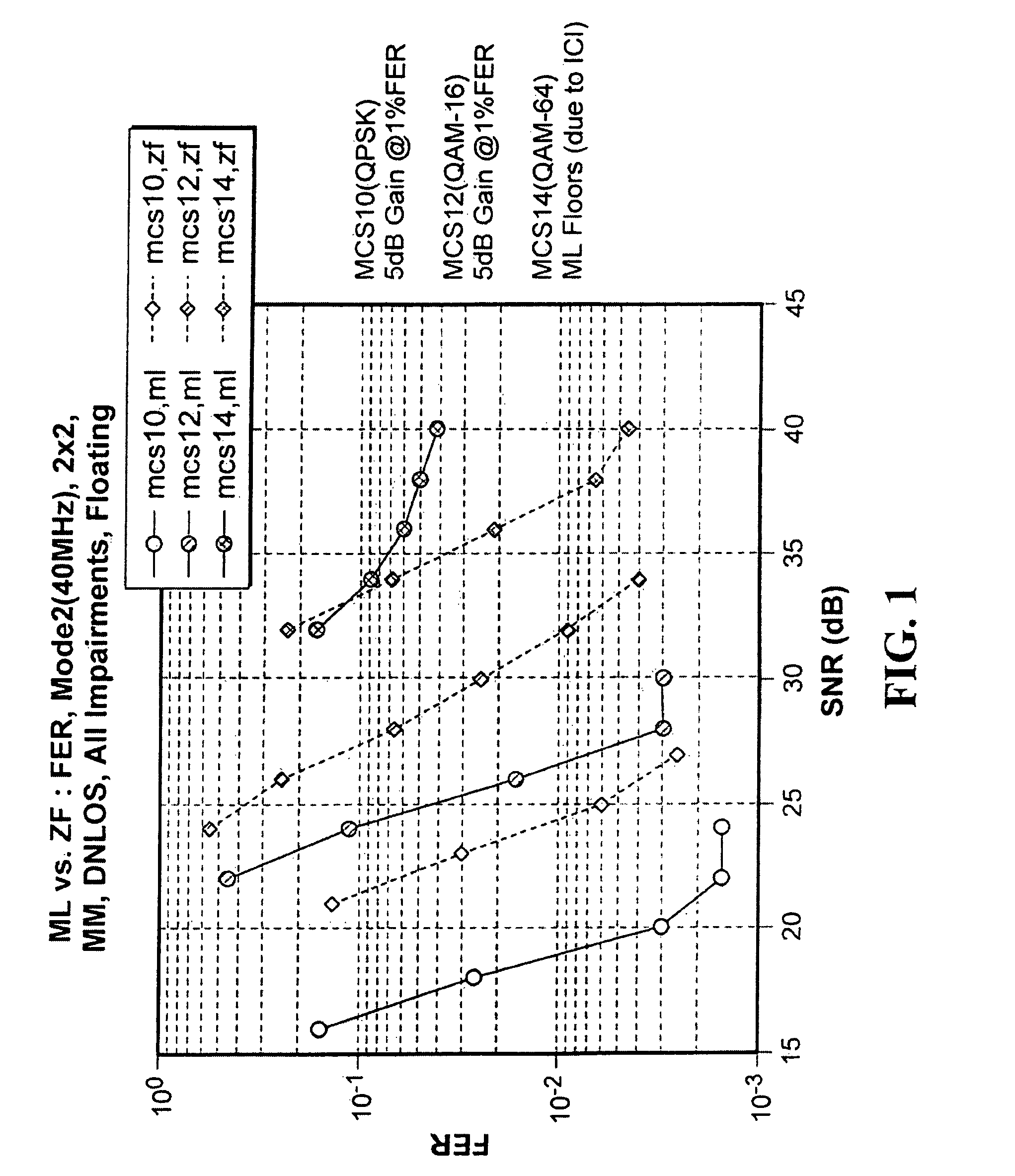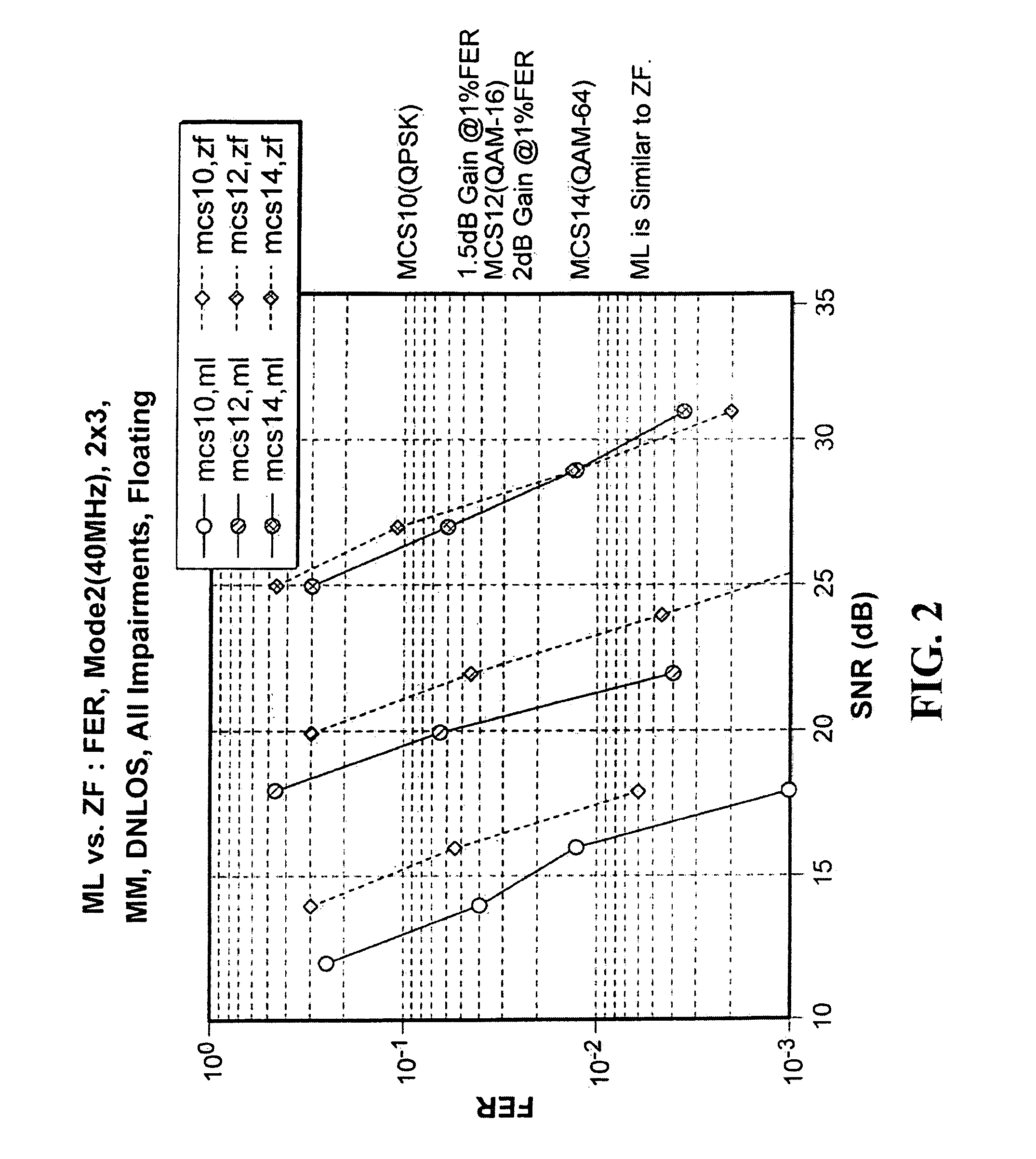System and method of selecting a data detection technique for a multiple-input multiple-output (MIMO) system
a data detection and multi-output technology, applied in the field of wireless communication techniques, can solve the problems of affecting the performance of both ml and zf techniques, too complex exhaustive search ml approaches may not be practical,
- Summary
- Abstract
- Description
- Claims
- Application Information
AI Technical Summary
Benefits of technology
Problems solved by technology
Method used
Image
Examples
Embodiment Construction
Introduction
[0016]The equalization techniques described below may be utilized for flat fading channels as well as for frequency selective fading channels with orthogonal frequency division multiplexing (OFDM). For simplicity, the following discussion addresses the technology in the context of single carrier systems for flat fading channels; those of skill in the art will appreciate that the disclosed methodologies may readily be extended to be implemented in OFDM systems.
[0017]In order to evaluate the relative advantages of exhaustive search maximum likelihood (ML) techniques as compared to zero forcing (ZF) techniques, a performance study has been conducted for different multiple input, multiple output (MIMO) configurations under spatial multiplexing for two or three spatial streams. The study involved a wireless local area network (WLAN) as a system platform. It will be appreciated that the techniques described herein may have utility in connection with various communications stan...
PUM
 Login to View More
Login to View More Abstract
Description
Claims
Application Information
 Login to View More
Login to View More - R&D
- Intellectual Property
- Life Sciences
- Materials
- Tech Scout
- Unparalleled Data Quality
- Higher Quality Content
- 60% Fewer Hallucinations
Browse by: Latest US Patents, China's latest patents, Technical Efficacy Thesaurus, Application Domain, Technology Topic, Popular Technical Reports.
© 2025 PatSnap. All rights reserved.Legal|Privacy policy|Modern Slavery Act Transparency Statement|Sitemap|About US| Contact US: help@patsnap.com



